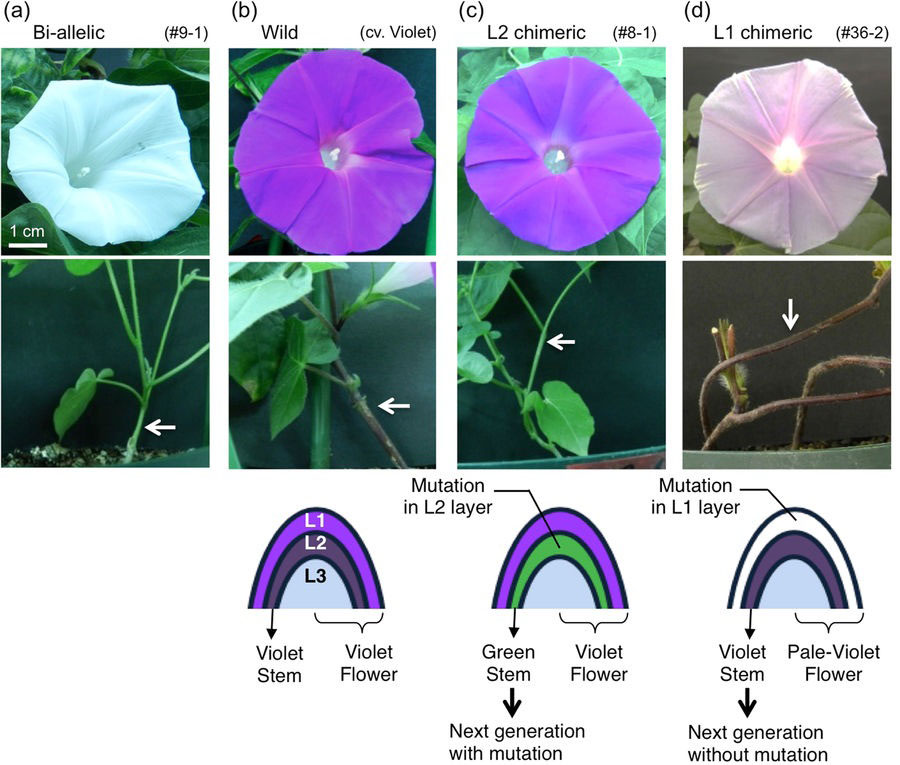アサガオのDFR-B遺伝子座におけるCRSPR/Cas9を用いた変異体の作出
CRISPR/Cas9-mediated mutagenesis of the dihydroflavonol-4-reductase-B (DFR-B) locus in the Japanese morning glory Ipomoea (Pharbitis) nil
2017年8月30日 Scientific Reports 7 : 10028 doi: 10.1038/s41598-017-10715-1

CRISPR/Cas9法は、植物をはじめとする多くの生物に選択的な変異導入を行うための汎用的なツールである。しかし、この技術は、日本のナショナルバイオリソース(NBRP)に選定された伝統的な園芸植物であるアサガオ(Ipomoea[Pharbitis]nil)には適用されていなかった。我々は、標的遺伝子として、アサガオのアントシアニン生合成酵素をコードするdihydroflavonol-4-reductase-B(DFR-B)を選択し、リゾビウム(アグロバクテリウム)を用いた形質転換による植物組織培養の初期段階で、茎の色の変化を観察した。形質転換植物体32本のうち24本(75%)は、DFR-BのCas9切断部位が両アレルで変異したアントシアニン欠損の白花を咲かせ、1塩基の挿入または2塩基以上の欠失が認められた。以上の結果は、CRISPR/Cas9法がこのモデル園芸植物の遺伝子機能の探究を可能とすることを示している。我々の知るかぎり、本論文は、CRISPR/Cas9法による高等植物の花色変化に関する最初の論文である。
Corresponding Author
CRISPR/Cas9 technology is a versatile tool for targeted mutagenesis in many organisms, including plants. However, this technique has not been applied to the Japanese morning glory (Ipomoea [Pharbitis] nil), a traditional garden plant chosen for the National BioResource Project in Japan. We selected dihydroflavonol-4-reductase-B (DFR-B) of I. nil, encoding an anthocyanin biosynthesis enzyme, as the target gene, and changes in the stem colour were observed during the early stages of plant tissue culture by Rhizobium [Agrobacterium]-mediated transformation. Twenty-four of the 32 (75%) transgenic plants bore anthocyanin-less white flowers with bi-allelic mutations at the Cas9 cleavage site in DFR-B, exhibiting a single base insertion or deletions of more than two bases. Thus, these results demonstrate that CRISPR/Cas9 technology enables the exploration of gene functions in this model horticultural plant. To our knowledge, this report is the first concerning flower colour changes in higher plants using CRISPR/Cas9 technology.

